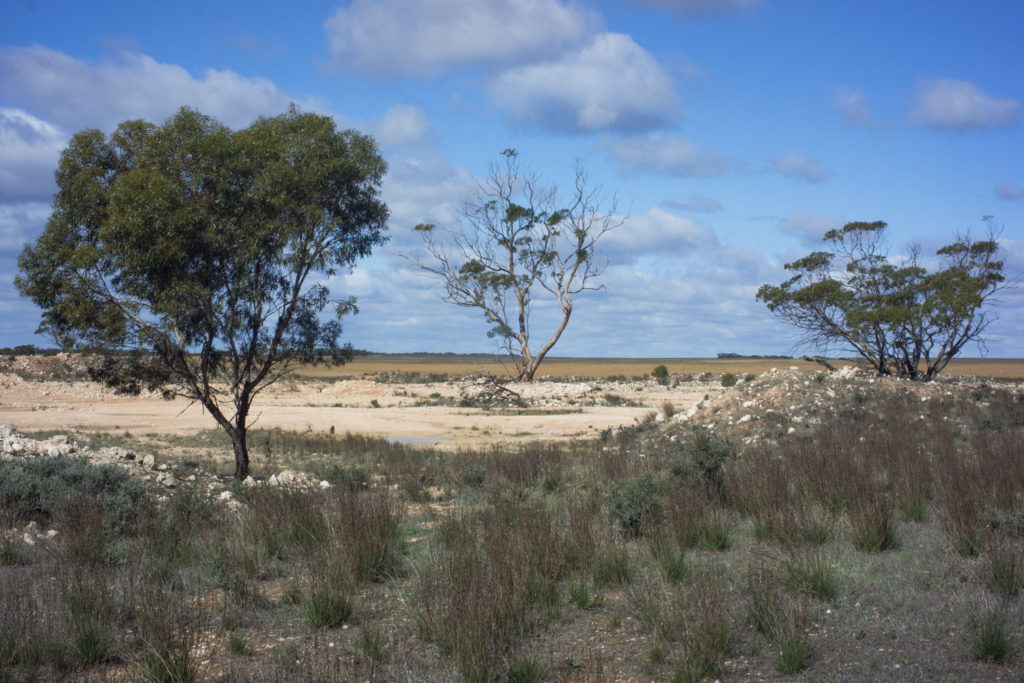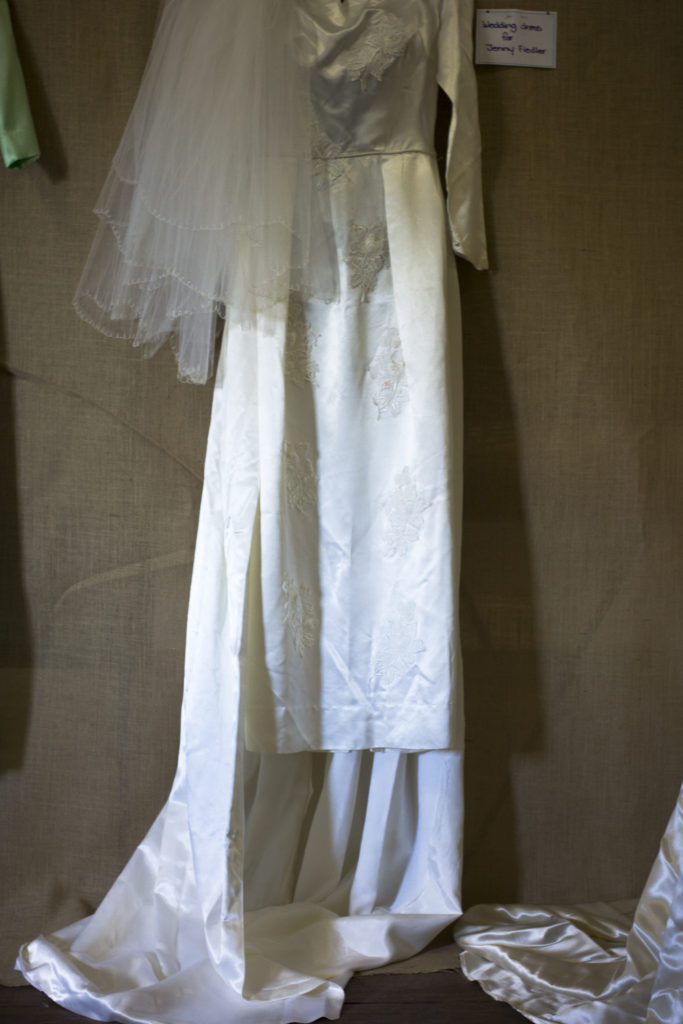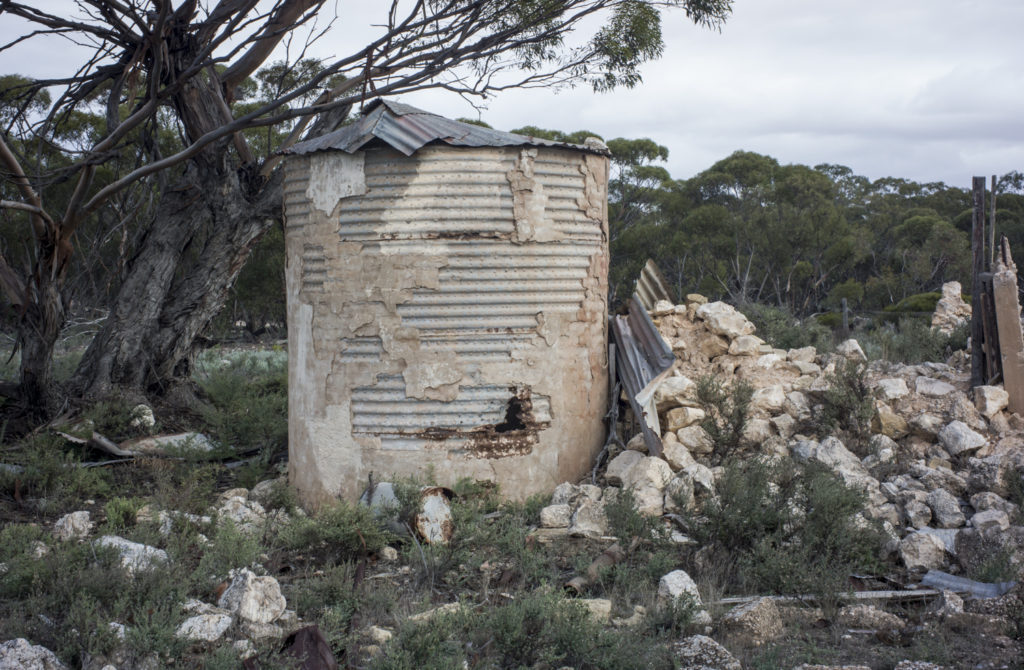I went on a 4 day photo trip into the South Australian Mallee with Gilbert Roe last week. We travelled on the Karoonda Highway to Loxton, camped Monday to Thursday in the caravan park by the River Murray and made individual day trips south into Mallee country from our base. The season of the lazy hazy autumn days finally finished whilst when we were camping at Loxton. It rained quite a lot on the first couple of nights we we’re there.
I explored along the Stott Highway, which runs from Loxton to Swan Reach, wandering along unsealed roads that ran east west in the Wunkar, Mantung, Galga and Wanbi region. I’d briefly checked out this area on a recent day trip, and I wanted to explore the area around Mantung in greater depth. This is limestone country. It is very dry and quite harsh, as very little rainfall recharges the underlying limestone aquifer. The main recharge is rainfall in south western Victoria and the water slowly moves in a north westerly direction via Pinnaroo and Murrayville towards Loxton and the River Murray, which acts as a drain for all the aquifers in the Murray Basin.
As the slow moving underground water moves through the limestone aquifer it dissolves soluble salts and becomes increasingly saline. Some of the biggest salt loads to the River Murray come from the Mallee Region–due to land clearing — whilst the future increases in the salt load into the river can be lessened through changes in agriculture in the dryland areas of the Mallee Region. Changes means increased revegetation, but conservation farming practices had not been widely adopted across the region, and so there is soil degradation, surface soil loss, rising water tables and increased erosion. The CSIRO ’s climate change research forecasts a dramatic rise in extreme weather events such as droughts and heatwaves, and a sharp drop in winter and spring rainfall across southern Australia.
 The area I was in is on the western edge of the limestone aquifer and it was a region of drylands farming that has been deeply impacted by the drought in the first decade of the 21st century. I’d spent most of the day on Wednesday and Thursday photographing, and I hardly saw one car and a tractor in a field on each day.This part of the South Australia Mallee is an empty landscape. It has been de-populated. The farms are increasingly corporate as a result of the process of amalgamation of small holdings and people live in Loxton and travel to work on the farm each day. The commute is about 30 minutes.
The area I was in is on the western edge of the limestone aquifer and it was a region of drylands farming that has been deeply impacted by the drought in the first decade of the 21st century. I’d spent most of the day on Wednesday and Thursday photographing, and I hardly saw one car and a tractor in a field on each day.This part of the South Australia Mallee is an empty landscape. It has been de-populated. The farms are increasingly corporate as a result of the process of amalgamation of small holdings and people live in Loxton and travel to work on the farm each day. The commute is about 30 minutes.
An example of the process of depopulation in this landscape the East Murray Area School, which used to have around 270 pupils in the 1960s and now it has 19 pupils. The schools future would have to be in doubt as the farmers in the region are in their 50’s and 60’s and the children leave the area for better jobs and higher income. People leave rural areas and small towns because technological and economic changes in the rural sector have brought about fewer employment opportunities, which in turn has led to a reduced need for goods and services and even fewer employment opportunities.




[…] and white photos with a large format camera and whilst exploring this area of the Mallee on the Loxton photo camp in late April I returned to the places I had photographed in the 1980s to see what had […]